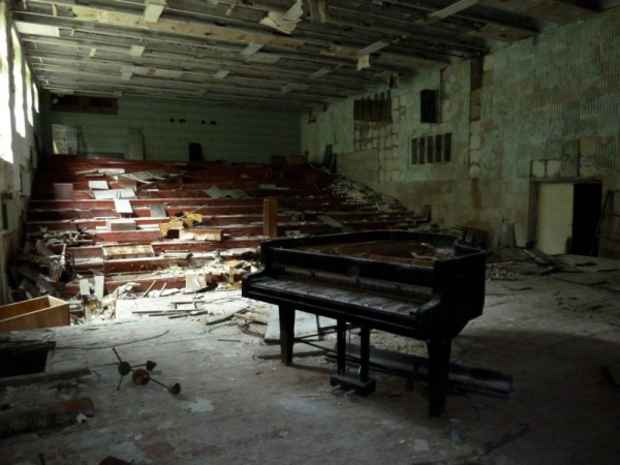Diana Thater "Chernobyl"
David Zwirner 19th Street

This event has ended.
David Zwirner announces the re-opening of the gallery with an exhibition by Diana Thater entitled Chernobyl. Framed around the site of the 1986 nuclear disaster, the 2011 video installation spotlights the consequences of manmade catastrophes on the natural world. The urgency of its subject matter resonates in the immediate aftermath of Hurricane Sandy and the damage it wrought within the Chelsea art district, and beyond.
Diana Thater is one of the most important video artists working today. Since the early 1990s, she has created a wide range of film, video, and installation-based works whose sculptural forms engage spatial perception in physical, as well as conceptual, terms. Her pioneering oeuvre was among the first to push the boundaries of how new media art is displayed, helping to cement its position in the art world.
Through a combination of the temporal qualities of video and the architectural dimension of its physical installation, Thater’s work explores the artifice of its own production and its capacity to construct perception and shape the way we think about the world through its image. Natural diversity, wildlife, and conservation have been persistent themes in the artist’s work, and she has dedicated herself to an examination of the varied kinds of relationships humans have constructed with animals. While her in-depth studies of ecosystems and animal behavior propose observation as a kind of understanding in itself, her ethical position is implicit in the work, which, while subtly political, provides views of the sublime in all its incarnations—stunning, beautiful, and simultaneously terrifying.
Chernobyl features imagery from the “zone of alienation,” a nineteen mile (30 km) wide exclusion area created around the site of the Chernobyl nuclear explosion in northeastern Ukraine (then officially Ukrainian SSR) in 1986. Over one hundred thousand people were evacuated from the area within a short time span, leaving behind all but a few of their personal belongings. The zone has since been a no-man’s-land dotted with abandoned villages and decaying infrastructure, largely untouched since the day of the disaster. It remains accessible only to special teams and researchers, though temporary visitor permits are granted.
To create this work, Thater stayed within the exclusion zone. Chernobyl takes its point of departure in the ghost city of Prypiat, which was purpose-built in 1972 to house workers at the nuclear plant. Using the desolate remains of Prypiat’s movie theater as a pivot, Thater’s footage focuses on the area’s wildlife, and in particular the endangered Przewalski’s Horse, a subspecies of wild horse released into the area following the catastrophe and now roaming freely, undisturbed by human interaction. Other animal populations have since returned to the area, yet according to most studies, their numbers remain severely depleted.
In Chernobyl, Thater juxtaposes pastoral scenery with destruction both apparent and implied, and in the process highlights the relationship between Western industrial civilization and the regenerative potential of nature left to itself. It mirrors a tension between the natural environment and mediated reality that can be seen throughout the artist’s work. The shape of the installation copies that of the movie theater in Prypiat. The work is made from a video re-creation of the theater with images of the zone of alienation layered over it, asking the viewer to see the world in the theater and the theater in the world.
[Image: Diana Thater "Music Classroom, Chernobyl" (2011) video still]
Media
Schedule
from November 09, 2012 to December 22, 2012
Opening Reception on 2012-11-09 from 18:00 to 20:00